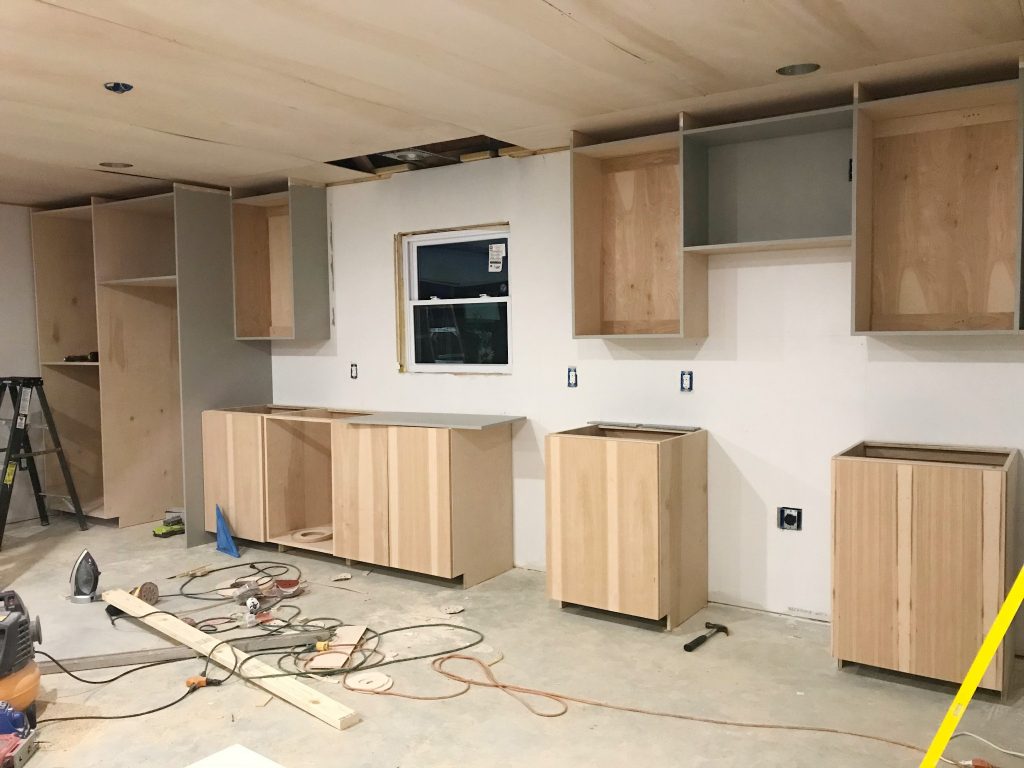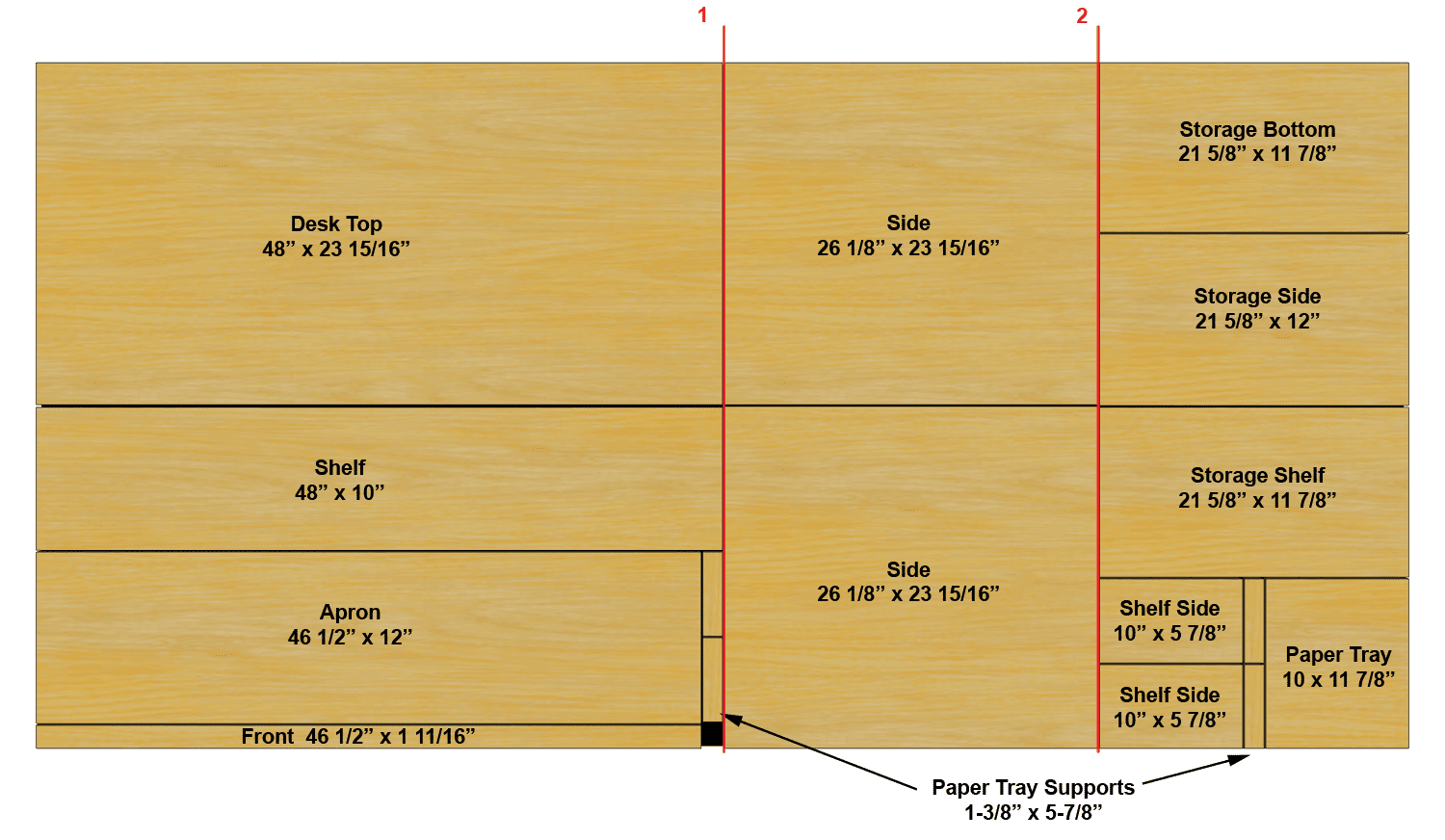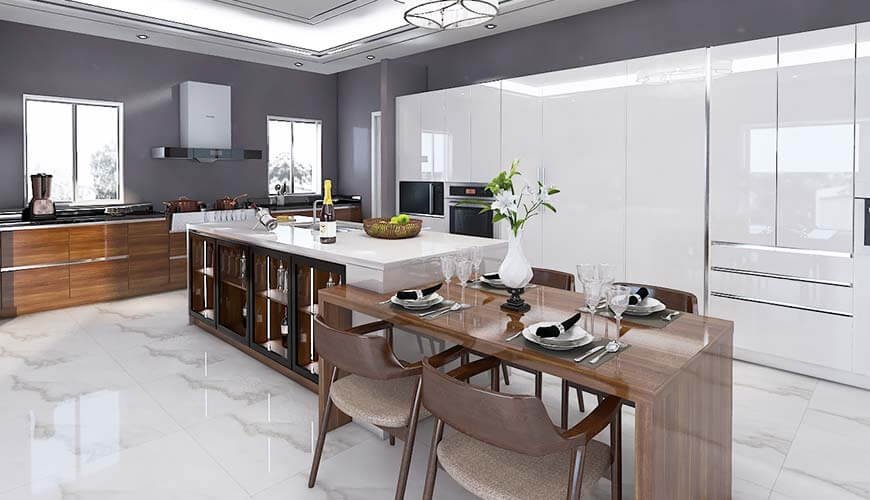You can typically make one to two kitchen cabinets from one sheet of plywood. The exact number depends on the cabinet size.
Creating kitchen cabinets involves precise measurements and efficient use of materials. Plywood sheets are a popular choice due to their durability and affordability. Standard plywood sheets measure 4 feet by 8 feet, providing ample material for crafting cabinets. Efficient planning and cutting can maximize the number of cabinets you can produce.
Factors such as the cabinet design, size, and layout play a crucial role in determining how many cabinets you can yield from a single sheet. Careful measurement and cutting techniques can reduce waste and ensure you get the most out of each plywood sheet. Proper planning is essential for achieving optimal results in cabinet construction.

Table of Contents
ToggleTypes Of Plywood
Understanding the types of plywood is crucial for estimating how many kitchen cabinets you can build from one sheet. Plywood comes in various grades and thicknesses. Each type serves different purposes in cabinet making. Here’s a detailed look at plywood grades and thicknesses.
Plywood Grades
Plywood grades indicate the quality and appearance of the plywood sheet. Here are the main grades:
- A-Grade: Highest quality, smooth, no visible defects. Ideal for cabinet exteriors.
- B-Grade: Minor flaws, still good for visible parts. Often used for cabinet faces.
- C-Grade: More visible defects, suitable for less visible areas. Used for cabinet interiors.
- D-Grade: Cheapest, many defects. Best for structural parts not visible.
Choosing the right grade impacts the quality and appearance of your cabinets.
Plywood Thickness
Plywood thickness affects the durability and stability of your cabinets. Common thicknesses include:
| Thickness | Common Uses |
|---|---|
| 1/4 inch | Cabinet backs, drawer bottoms |
| 1/2 inch | Cabinet sides, shelves |
| 3/4 inch | Cabinet doors, structural parts |
Thicker plywood offers more strength. Thinner plywood is lighter and easier to handle.
Each plywood sheet’s size also matters. Standard sheets are 4×8 feet. This size helps in planning your cuts and maximizing material use. Knowing these types helps you get the best value from each plywood sheet.
Planning Your Project
Planning is key to building kitchen cabinets. Efficient planning saves time and materials. It helps you avoid mistakes. Follow these steps for a successful project.
Measuring Your Space
Start by measuring your kitchen space. Use a tape measure for accuracy. Note the height, width, and depth of your space. Write down each measurement clearly.
- Measure the height from floor to ceiling.
- Measure the width of the wall space.
- Measure the depth from the wall to the edge of the counter.
These measurements guide your design. Accurate measurements ensure a perfect fit.
Designing Your Cabinets
Decide on the type of cabinets you need. Do you want upper cabinets, lower cabinets, or both? Sketch a basic design on paper. This helps you visualize the final product.
List the parts you’ll need:
- Sides
- Backs
- Bottoms
- Shelves
- Doors
Use a single sheet of plywood efficiently. Plan the cuts to minimize waste. Here’s a sample table to guide you:
| Part | Quantity | Dimensions |
|---|---|---|
| Side Panels | 2 | 30″ x 24″ |
| Back Panel | 1 | 30″ x 24″ |
| Bottom Panel | 1 | 24″ x 24″ |
| Shelves | 2 | 24″ x 12″ |
| Doors | 2 | 15″ x 24″ |
Double-check your measurements and design. This ensures you use the plywood sheet efficiently.
Calculating Plywood Needs
Planning a kitchen remodel? You need to know how much plywood is necessary. Calculating plywood needs helps you budget and minimize waste. This guide simplifies the process.
Standard Plywood Sheet Dimensions
First, understand the dimensions of a standard plywood sheet. A typical sheet measures 4 feet by 8 feet. This equals 32 square feet of material. Plywood thickness varies, but common choices are 1/4 inch, 1/2 inch, and 3/4 inch.
Estimating Cabinet Pieces
Next, estimate the number of cabinet pieces from one plywood sheet. Consider the parts needed for one cabinet: sides, back, bottom, top, and doors.
| Cabinet Part | Typical Dimensions (in inches) | Quantity per Cabinet |
|---|---|---|
| Side Panels | 34.5 x 24 | 2 |
| Back Panel | 34.5 x 24 | 1 |
| Bottom Panel | 24 x 24 | 1 |
| Top Panel | 24 x 24 | 1 |
| Doors | 30 x 12 | 2 |
Use these dimensions to sketch a layout on the plywood sheet. This helps maximize material usage and minimize waste.
Here’s a simple example:
- Draw a rectangle for each piece on the plywood sheet.
- Ensure all pieces fit within the 4 feet by 8 feet area.
- Adjust the layout to fit as many pieces as possible.
To save more plywood, consider smaller cabinet designs or use scraps for other projects.
Cutting Techniques
Creating kitchen cabinets from a single sheet of plywood requires precise cutting techniques. Proper techniques ensure you maximize the use of your plywood and reduce waste.
Tools Required
To cut plywood accurately, you need the right tools. Here is a list of essential tools:
- Circular Saw: For straight cuts.
- Table Saw: Provides consistent, straight cuts.
- Jigsaw: Ideal for curved or irregular cuts.
- Clamps: Holds the plywood steady.
- Measuring Tape: Ensures accurate measurements.
- Carpenter’s Square: For ensuring right angles.
- Safety Gear: Includes gloves and safety goggles.
Cutting Accuracy Tips
Accurate cuts are essential for making the best use of your plywood. Here are some tips to help you achieve precision:
- Measure Twice: Always double-check your measurements before cutting.
- Use a Straight Edge: Guide your saw along a straight edge for clean cuts.
- Mark Clearly: Use a pencil to mark your cutting lines clearly.
- Apply Clamps: Clamp the plywood to your workbench to prevent movement.
- Cut Slowly: Cutting slowly reduces the risk of splintering.
- Check Blade Sharpness: A sharp blade ensures smooth cuts.
- Use a Guide: A cutting guide helps keep your saw steady.
By following these tips, you can ensure each cut is precise and clean. This accuracy will help you create beautiful, functional kitchen cabinets from just one sheet of plywood.
Maximizing Efficiency
Maximizing efficiency in using a sheet of plywood is essential for creating kitchen cabinets. By carefully planning and optimizing the layout, you can make the most out of every sheet. This reduces waste and saves money. Let’s explore the best practices for achieving this.
Optimizing Layout
To optimize the layout, start by measuring your kitchen space. Draw a detailed plan of your cabinets. Use graph paper or design software. This helps in visualizing the cuts and placements. Next, list all the pieces you need for your cabinets. Group similar sizes together. This ensures you use the entire sheet efficiently.
Consider using a cut list. This outlines the dimensions of each piece. Arrange these pieces on the plywood sheet to minimize offcuts. Use a table saw or circular saw for precise cuts. This helps in reducing errors and wastage.
Minimizing Waste
Minimizing waste is crucial for both cost and environmental reasons. Follow these tips:
- Plan your cuts: Measure twice, cut once. This avoids mistakes.
- Use scraps wisely: Small pieces can become supports or braces.
- Recycle offcuts: Use leftover plywood for other projects.
Consider using a table to track your material usage:
| Piece | Dimensions (inches) | Quantity |
|---|---|---|
| Side Panel | 24 x 36 | 2 |
| Shelves | 24 x 12 | 4 |
| Back Panel | 24 x 36 | 1 |
This table helps in tracking the plywood usage. It ensures you cut the correct amount.
:max_bytes(150000):strip_icc()/100673001x-02513bc4d584421ca85df947006eaae9.jpg)
Assembly Tips
Creating kitchen cabinets from a single sheet of plywood can be challenging. Proper assembly is key to achieving sturdy and beautiful cabinets. Below are some essential assembly tips to help you get the best results.
Joining Methods
Choosing the right joining methods is crucial for cabinet strength. Here are some popular methods:
- Dovetail Joints: Provide a strong and attractive connection. Ideal for drawers.
- Pocket Screws: Offer a quick and easy way to join pieces. Perfect for frames.
- Biscuits: Use for aligning edges. Great for large panels.
- Dowels: Offer precise alignment. Suitable for shelves and partitions.
| Joining Method | Best For |
|---|---|
| Dovetail Joints | Drawers |
| Pocket Screws | Frames |
| Biscuits | Large Panels |
| Dowels | Shelves |
Finishing Touches
The finishing touches can make your cabinets stand out. Consider these tips:
- Sanding: Smooth all surfaces for a professional look.
- Staining: Use a stain to enhance the wood grain.
- Painting: Choose a durable paint for kitchen use.
- Sealing: Apply a clear coat to protect the wood.
- Hardware: Install high-quality handles and hinges.
Following these assembly tips ensures your kitchen cabinets are both functional and beautiful.
Expert Insights
Understanding how many kitchen cabinets you can get from one sheet of plywood is crucial. Experts share their tips and insights to help you maximize your materials.
Common Mistakes To Avoid
- Ignoring grain direction: Always align cuts with the wood grain.
- Wasting material: Plan cuts to reduce scrap pieces.
- Incorrect measurements: Double-check dimensions before cutting.
- Overlooking thickness: Consider plywood thickness in your calculations.
Pro Tips For Best Results
- Use a cutting diagram: Draw a layout to optimize space.
- Invest in quality tools: Sharp blades ensure clean cuts.
- Label your pieces: Mark each piece to avoid confusion.
- Pre-drill holes: This prevents wood from splitting.
Planning Your Cuts
Use a table to plan your cuts efficiently. Here’s an example:
| Piece | Quantity | Dimensions (inches) |
|---|---|---|
| Side Panels | 4 | 24 x 34 |
| Bottom Panels | 2 | 24 x 24 |
| Shelves | 4 | 24 x 12 |
These tips and insights ensure you get the most cabinets from one plywood sheet.

Frequently Asked Questions
How Many Cabinets From One Plywood Sheet?
Typically, you can make two to four cabinets from one plywood sheet, depending on cabinet size and design.
What Size Plywood For Kitchen Cabinets?
For kitchen cabinets, 3/4-inch plywood is commonly used for its durability and strength.
How To Maximize Plywood Usage?
Plan and measure carefully. Use a cut diagram to minimize waste and maximize plywood usage.
Best Plywood Type For Cabinets?
Baltic Birch plywood is highly recommended for its strength, stability, and smooth finish.
How To Cut Plywood For Cabinets?
Use a circular saw with a fine-tooth blade for precise, clean cuts.
Is Plywood Better Than Mdf For Cabinets?
Plywood is generally stronger and more moisture-resistant than MDF, making it better for kitchen cabinets.
How Thick Should Cabinet Plywood Be?
For most kitchen cabinets, 3/4-inch thick plywood is ideal for both strength and durability.
Can I Build Cabinets With Half-inch Plywood?
While possible, 1/2-inch plywood is less durable than 3/4-inch and may not support heavy loads well.
How To Finish Plywood Cabinets?
Sand the surface, apply a wood primer, and finish with paint or varnish for a smooth, durable finish.
Can I Use Plywood For Cabinet Doors?
Yes, plywood is suitable for cabinet doors, especially when using high-quality, smooth-finish plywood.
Conclusion
Maximizing plywood for kitchen cabinets requires careful planning and precision. By optimizing cuts and minimizing waste, you can create efficient and beautiful cabinetry. Use these tips to make the most of each plywood sheet, ensuring your kitchen remodel is both cost-effective and stylish.
Happy building!


